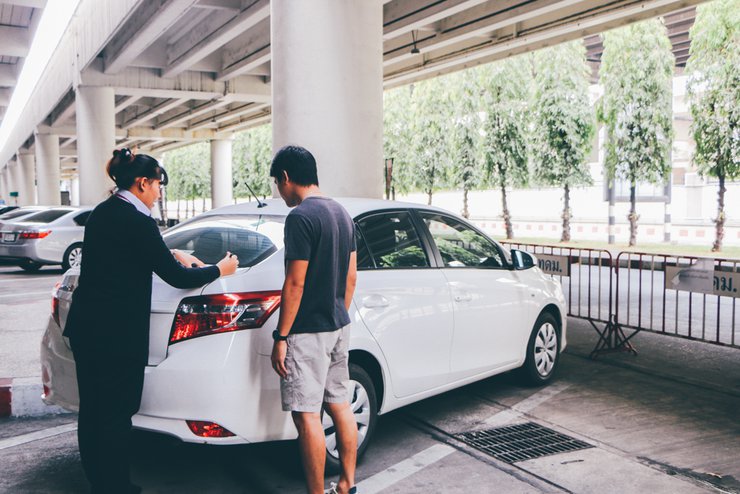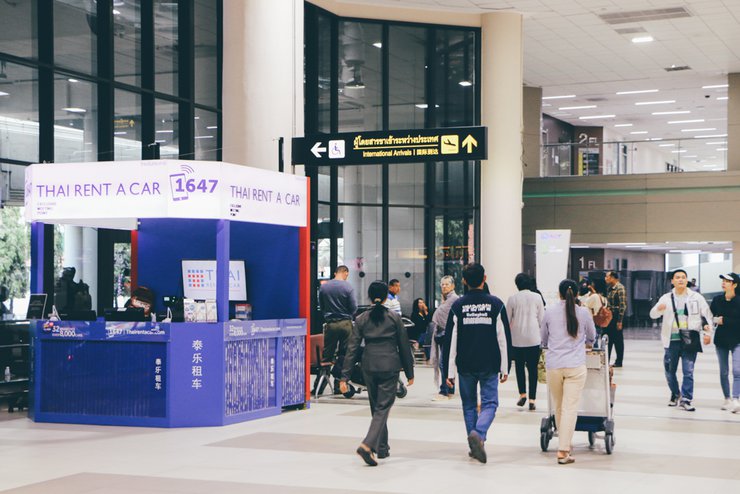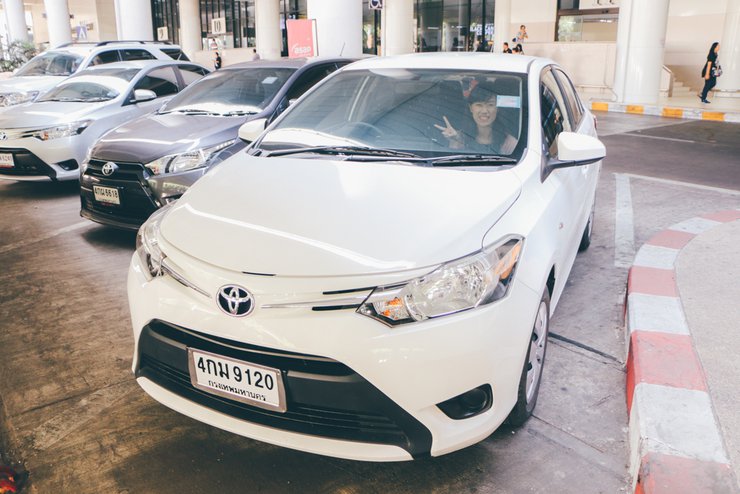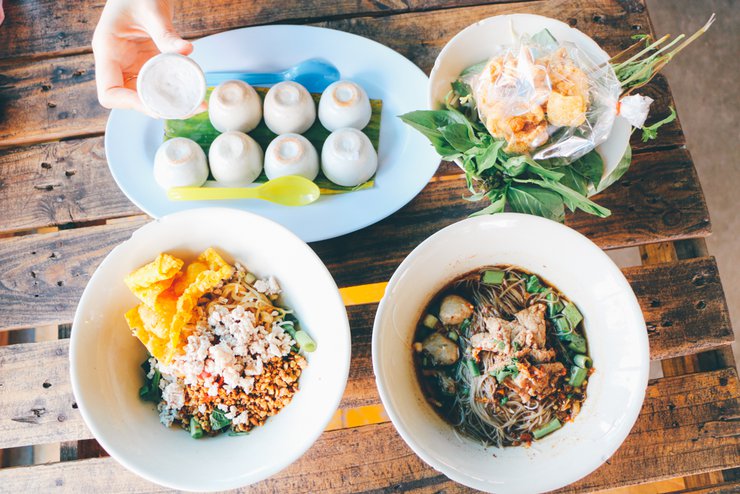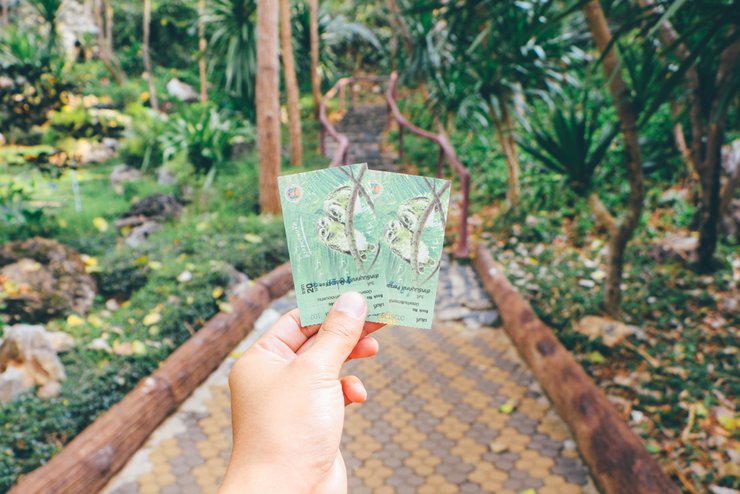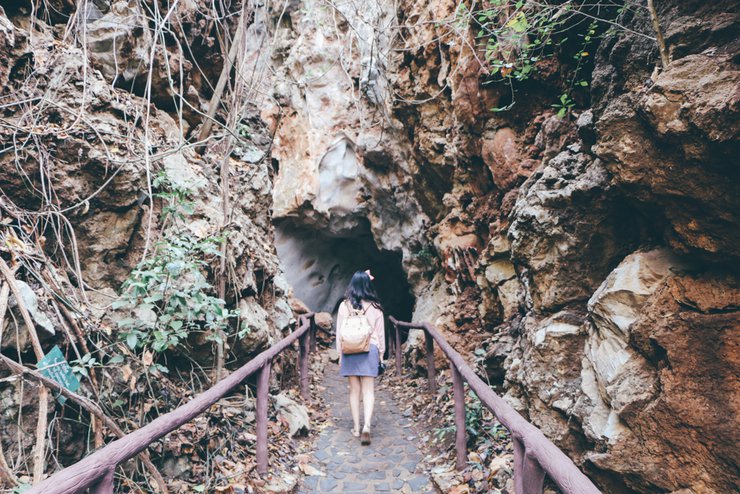Uthai Thani: The Birthplace of the Chakri Dynasty
Uthai Thani, the land of the Chakri Dynasty's ancestors, boasts a rich tapestry of cultural heritage and natural wonders.
- "ปลาแรดรสดี" (Delicious Pla Raed): The province is renowned for its delectable Pla Raed, a fermented fish dish that tantalizes taste buds.
- "ประเพณีเทโว" (The Thevo Tradition): The vibrant Thevo tradition, a unique blend of Buddhist and animist beliefs, showcases the province's cultural depth.
- "ส้มโอบ้านน้ำตก" (Baan Namtok Pomelo): The sweet and juicy Baan Namtok pomelo, grown in the lush waterfalls, is a local delicacy.
- "มรดกโลกห้วยขาแข้ง" (Huai Kha Khaeng World Heritage Site): The pristine Huai Kha Khaeng World Heritage Site, a haven for biodiversity, is a testament to the province's natural beauty.
- "แหล่งต้นน้ำสะแกกรัง" (The Source of the Sakae Krang River): The Sakae Krang River, originating in Uthai Thani, nourishes the surrounding lands and sustains life.
- "ตลาดนัดดังโคกระบือ" (The Renowned Ko Kra Buea Market): The bustling Ko Kra Buea Market, a hub of local commerce, reflects the province's vibrant economic spirit.
Uthai Thani, a land steeped in history and blessed with natural abundance, invites you to explore its captivating charm.
Uthai Thani, a province in the lower northern region of Thailand, is often overlooked as merely a passageway to the upper north or down to the central region. Many consider it a less desirable travel destination, believing it lacks noteworthy attractions. However, we refused to accept this notion without firsthand experience and embarked on a journey to discover its hidden gems. Join us as we unveil the beauty and charm of Uthai Thani, a province that will surely captivate your heart.
Our journey began at Don Mueang Airport, not by boarding a plane, as Uthai Thani province does not yet have an airport. Instead, we picked up our rental car from Thai Rent A Car, which we had booked in advance through their website or call center. The car rental counter is conveniently located on the 1st floor of the Domestic Arrivals Terminal (Terminal 2), near the exit gate.

Upon arrival, present your reservation name, driver's license, and credit card to the staff. They will verify your reservation details and temporarily hold a security deposit on your credit card. This deposit serves as insurance for the rental and will be refunded upon the vehicle's return. The staff will then accompany you to the vehicle to jointly inspect for any existing scratches or dents, ensuring that any pre-existing damage is documented. Once the inspection is complete, you can sign the rental agreement. The entire process typically takes less than 15 minutes.

Uthai Thani province is approximately 200 kilometers from Bangkok, with a travel time of about 2.5 hours. It is accessible by public transportation or private car. For those without a private car and who wish to visit various tourist attractions independently, renting a car is the most convenient option. Currently, Thai Rent A Car offers a promotion starting at 550 baht per day until September 30, 2017, with vehicles available for pickup at all branches nationwide.

The journey began when everyone was ready. Along the way, there were alternating rain and sunshine. We stopped for lunch near Ayutthaya province, where we had simple dishes like boat noodles and cup desserts.

Following the signs on the Asian Highway, we drove straight ahead before turning left into Uthai Thani city. We checked in and left our luggage at Baan Ing Nam Resort, our accommodation for the night.

The resort is situated along the banks of the Sa Kae Krang River, offering two types of accommodation: floating bungalows and standard rooms on land. Prices start from 800 baht.

The floating house has only two rooms. The room on the left has air conditioning and costs 1,200 baht. The room on the right has a fan and costs 800 baht.

The room amenities include a TV and a refrigerator, but there is no WiFi.

The unit features a spacious en-suite bathroom equipped with a sink, toilet, and shower (no hot water heater).

After checking in and resting for a while until the fatigue subsided, we set off for the Huai Tad Forest Valley in Lan Sak District, which is about 50 kilometers from Uthai Thani city center. The journey took about an hour.

The Huai Pa Taad Cave was discovered in 1979 by Phra Khru Santitham Kosol (Luang Pho Thongyod), the abbot of Tham Thong Temple, who climbed down into the valley.

In 1984, a tunnel was blasted to create an entrance to the Tad Forest Valley, with the aim of developing it as a tourist destination.

The path, approximately 100 meters long, was carved to penetrate the interior of the valley. The rough and dark ground necessitates the use of flashlights provided upon ticket purchase. The experience evokes a sense of traversing through dimensions to a mysterious land, with a welcoming light at the end of the tunnel.

Upon emerging, a vast valley unfolds, teeming with diverse flora amidst towering limestone cliffs.

Follow the concrete stairs with handrails to descend to the bottom of the valley, where a nature trail awaits.

The interior is shady and relatively humid, with large and small rocks scattered along the path. The majority of the trees in this valley are fan palms, which belong to the same family as palm trees.

In the center of the valley, there is a small cave with beautiful stalactites and stalagmites. It is possible to walk through the cave to the other side of the valley.

The atmosphere is like walking in a primeval forest with dinosaurs lurking in the bushes.

A newly discovered pink dragon millipede, a species endemic to this region, emerges only during the rainy season, from August to November each year.

In addition to the pink dragon millipede, two other rare species inhabit this cave: the goral and the yellow turtle. The goral is rarely seen alive, with only footprints left on the ground as evidence of its presence. The yellow turtle, on the other hand, can still be encountered occasionally.

We encountered a yellow turtle (we named it Minion) with a shell that wasn't very yellow. This terrestrial turtle, found on the side of the path, forages within this valley.

After completing a full circle around the natural trail, we exited the area. The Tad Forest Valley is open daily from 8:00 AM to 5:00 PM. The optimal time to visit is between 11:00 AM and 1:00 PM. Admission fees are as follows: Thai adults 20 baht, Thai children 10 baht, and foreign visitors 200 baht.

Visitors can request assistance from young tour guides who will provide information and guidance throughout the valley. The guides work on a voluntary basis, and their compensation is determined by the generosity of visitors who contribute to a central donation box. At the end of each day, the collected funds are divided equally among the participating young guides, serving as a source of educational support.

Besides the Tad Forest Valley, there is another interesting place nearby, which is the Pla Ra Mountain. It features prehistoric paintings estimated to be 3,000 years old. These red and black line drawings, spanning 9 meters and containing approximately 40 images, depict the social life of ancient humans. The hike up and down the mountain takes about 4-5 hours. If you are interested, it is recommended to set aside half a day. (The picture below is an example of the paintings displayed at the entrance of the Tad Forest Valley.)

After exploring the lush forests of Tad, we returned to Uthai Thani city to witness the breathtaking sunset from the peak of Khao Sakae Krang. Two options are available for reaching the summit: driving or climbing the 449 steps of Wat Sangkat Rattanakhiri, the temple renowned for hosting the annual Tak Bat Thewo tradition.

We drove up the side of the provincial stadium, arriving at the top around 6 pm. Today, there were quite a few clouds obscuring the sun, so we could only see orange-pink light scattered across the sky.

The western side of Khao Sakae Krang offers stunning sunset views, while the eastern side provides panoramic vistas of Uthai Thani city.

The upper level houses several important religious sites where visitors can pay their respects to the sacred objects enshrined within.

For example, the replica of the Buddha's footprint enshrined in the Sirimahamaya Kuda Kar, which is modeled after the place where Queen Sirimahamaya resided when she ascended to the celestial realm.

Equestrian statue of King Taksin the Great, the founder of the Thonburi Kingdom and the predecessor of the Chakri dynasty.

Enshrined in the four-faced pavilion.

After driving down from Khao Sakae Krang, we strolled through the historic Chinese community of Uthai Thani, visiting the vibrant Trok Rong Ya Walking Street, also known as Sek Kiek Kang.

This town has a walking street every Saturday evening, from 3 pm to 9 pm.

Shortly after our arrival, a light drizzle began to fall, prompting vendors to gradually pack up their stalls. Seeking shelter from the rain, we ventured inside the Baan Nok Khao, taking the opportunity to explore its interior.

A small museum housed in a private home, showcasing a collection of antique household items gathered over time. Visitors are welcome to explore and photograph the exhibits free of charge. For any unfamiliar items, feel free to inquire with the friendly owners, who are always happy to share their knowledge.

Besides household items, there are also old photographs that tell stories of Uthai Thani's past.



Soon, the rain began to fall harder. We were also very hungry, so we ran across the street to the rice porridge shop opposite the house of the dove.


A wide variety of menus are available at affordable prices.


We ordered three dishes: steamed snakehead fish with dipping sauce, stir-fried morning glory with red chili paste, and spicy Chinese sausage salad. We also had a bowl of rice porridge each.

Every dish is delicious. Eating it with hot rice porridge while it's raining creates a wonderful atmosphere.

As the rain subsided, signaling the approaching end of the downpour, the group made their way to Kru Off's Thai silk shop, situated near the walking street. This establishment had caught Taiglum's eye from the moment they arrived, as she held a deep appreciation for Thai fabrics, particularly the diverse patterns found in local sarongs.

The shopkeeper was incredibly kind and friendly, bringing out a variety of shirts and sarongs for me to try on. Some of the items were quite expensive, but he still encouraged me to try them. It felt like we were siblings playing dress-up with our mother's clothes. We both had a lot of fun. In the end, I couldn't resist and bought three sarongs and a shirt.

After a shopping spree that left us feeling light on our feet, we drove to enjoy the night view by the Sakae Krang River, opposite Wat Uposatharam.

Nearby, there were stalls selling hot, delicious-looking grilled meatballs and sausages. We each grabbed a couple to hold us over until bedtime. The dipping sauce was fantastic.

The next morning, we borrowed bicycles from our accommodation to cycle and observe the morning life of the villagers living on the floating houses and the atmosphere of the morning market along the Sakae Krang River, which is only 1 kilometer away from our accommodation.

The floating houses community along the Sakae Krang River is a unique landmark of Uthai Thani province, having coexisted with the river for centuries.

However, the number of these floating houses is gradually decreasing due to the high cost of repair materials and the difficulty of maintenance. As a result, villagers have begun to move to the shore.


The houseboats are typically simple wooden structures with minimal embellishments.

The traditional Thai house, with its pointed gables resembling jasmine buds or hip roofs, was built on a raft of bamboo logs. The raft was constructed with a floor, posts, and beams, similar to a regular house on land.

The majority of the floating house residents are engaged in freshwater fishing, using various types of fish traps. They also raise fish in cages for household consumption and market sale.

The morning atmosphere by the Sakae Krang River flows slowly, following the rhythm of the water and the wind.

The morning market by the Sakae Krang River has been bustling since dawn.

A wide variety of fresh and prepared food is available for purchase and consumption.


As the morning sun began to shine, the market gradually dispersed.


We bought a few snacks from the market and cycled back to the hotel for breakfast.

After finishing their meal, they relaxed and enjoyed the scenic view from the riverside terrace.

When you are feeling down, try dipping your feet in water. - Jeep Wacharawalee




After dipping their feet in the water to their satisfaction, they packed their belongings, checked out of the hotel, and stopped to take pictures at a vast rice field not far from their accommodation.

A vast expanse of verdant rice fields, interspersed with towering palm trees, bisected by a narrow road, all bathed in the glow of a clear sky. This is our favorite spot.

For those who want to follow in their footsteps, here are the coordinates: https://goo.gl/q0vCSD

From the rice fields, drive back to Wat Uposatharam, originally named "Wat Bot Manomai", but the locals call it "Wat Bot" for short. It is an ancient temple built during the Rattanakosin period in 2324 BE, located on Ko Thepho, along the banks of the Sakae Krang River.

The front features an octagonal pavilion, a two-story octagonal building with a spiral staircase on the outside. The arched window frames are reminiscent of colonial-era buildings, and the stucco molding on the exterior walls depicts the Buddha in the "Offering the Eye" posture, surrounded by swans and cranes.

Built in 1899 by Luang Phithak Phasa (Bunruang Phithak Ananop), the temple was dedicated to Phra Sunthon Muni (Chan), or Phra Kru Uthai Thit Tham, who was the abbot of the temple and the head monk of Uthai Thani province during the reign of King Rama V.

This is a simple and short translation of the provided text.
Note: The original text only contained an empty paragraph tag (<p></p>), which does not require any translation.

Behind the ordination hall and the viharn, there are three chedis. The first, located to the north, is a hexagonal Ayutthaya-style chedi. The central chedi is a twelve-sided Ratanakosin-style chedi with five small spires. The southern chedi is a Sukhothai-style lom-fang chedi.

The ubosot (left side of the picture above) has four small square-shaped chedis in front. Inside the ubosot, there is a Sukhothai-style Buddha statue in the attitude of subduing Mara as the main Buddha statue, surrounded by four other Buddha statues on the same base.

The four inner walls of the ordination hall are adorned with murals depicting the life of the Buddha. Notably, these murals include a scene of the army of Mara, the demon king, attempting to disrupt the Buddha's meditation. The murals also depict the earth goddess rising from the ground to bear witness to the Buddha's accumulated merit, causing Mara to concede defeat.

To the left of the ordination hall is the viharn, which houses the main Buddha image in the posture of forbidding relatives. To the left and right of the main Buddha image are standing Buddha statues made of sandalwood, each adorned with a five-tiered umbrella above their heads. The interior features murals depicting the Buddha preaching to the gods in heaven, the ceremony of contemplating the repulsiveness of the body, and an assembly of monks and disciples holding various ceremonial fans.

The front of the viharn depicts the cremation ceremony of the Buddha and scenes of villagers' lives related to Buddhism.

After visiting the religious site of Wat Uposatharam, we drove to have lunch at the Hongte Noodle Shop, the original maker of homemade egg noodles.

This restaurant's signature dish is its handmade egg noodles, crafted using a traditional Sichuan recipe passed down through generations for over a century.


Freshly made and meticulously cooked noodles, resulting in exceptionally chewy and tender noodles.

Served with traditional char siu or special roasted pork and a rich, flavorful broth, this dish is so delicious you'll be asking for "seconds, please!"


After a satisfying meal, we headed to Baan Jongrak Coffee Shop on Si Uthai Road (near the Provincial Hall) for refreshing drinks.


A coffee shop adorned with a collection of memorabilia, including popular cartoon character models from past to present, meticulously preserved in a large glass cabinet.


The upper floor of the shop houses a museum dedicated to Khun Ta Luang Phet Songkram, the governor of Uthai Thani during the reign of King Rama V. He was the great-grandfather of the owner's mother, hence the name of the shop, which serves as a memorial to him.

This exhibit showcases personal belongings and vintage photographs collected since the great-grandparent's generation.


Next to the hall is the bedroom, which houses furniture from the time Uncle Tum's parents were married in 1951. The furniture is meticulously preserved and remains in pristine condition.

The dressing table in the room has elephant ear doors. If you stand in the middle, you can see your hairstyle from the left, right, and back. The design is very cool.

At the back of the house, there is a connecting path leading to a traditional Thai house. This house was given to Uncle Tum's grandmother as a dowry when she got married over a hundred years ago.


The interior showcases antique furnishings and photographs, creating a nostalgic atmosphere that transports visitors back in time.



The kitchenware was neatly arranged, as if it were still used regularly. Many of the items were familiar from my childhood, and seeing them again brought back a flood of memories.


Uncle Tum stated that he has a deep connection with this house as he was born and raised here. He has been responsible for maintaining and caring for the house ever since.




This place is only open on Saturdays, Sundays, Mondays, and public holidays from 7:30 AM to 5:00 PM. If Uncle Tum is available, he will personally take you on a tour of the upstairs and tell you stories and the history of the pictures and belongings in this house. Uncle is very kind and friendly.

After visiting the museum and enjoying refreshing drinks at Baan Jongrak, we concluded our trip with a visit to Sukho Hydrofarm, a nearby hydroponic farm offering pesticide-free vegetables.

Hydroponically grown vegetables, meticulously cultivated and cared for within a greenhouse that regulates light intensity and prevents insect infestations.

The vegetables here are fresh, clean, and very appetizing. They can be used in a variety of dishes, such as salads.

For inquiries or to purchase as a souvenir, please contact Sukho Hydrofarm directly on Facebook.

After that, we drove straight to Bangkok to return the car at Don Mueang Airport. This marked the end of our trip to Uthai Thani with my girlfriend. It was a heartwarming experience, making the most of our two-day, one-night weekend getaway to the tourist and recreational attractions of Uthai Thani, a province often overlooked as merely a stopover point.

This time, we have proven that Uthai Thani is a province with many interesting tourist attractions, covering all aspects of tourism, whether it be nature, lifestyle, or culture. The people are friendly and welcoming. It is a province that should no longer be just a passing point because it is very good for the heart. Therefore, if you have a few days free, we would like you to try to experience Uthai Thani more by yourself.
Travel details summary:
**Day 1**
1. Embark on a journey from Don Mueang Airport via a rental car from Thai Rent A Car.
Contact Information Website: https://www.thairentacar.com / Call Center: 1647
2. Stop by for boat noodles and cup desserts in Ayutthaya province.
- Check in to your accommodation at Baan Ing Nam Resort, located by the Sa Kae Krang River.
Contact Information Website: http://www.baan-ingnam.com / Tel: 056-980199, 080-8399499
4. Explore the Tad Forest Valley, an ancient forest amidst limestone mountains.
5. Visit the ancient rock paintings at Khao Pla Ra (recommended if you have about half a day to spare)
6. Pay homage to the replica of the Buddha's footprint and the statue of King Rama I, the founder of the Chakri dynasty. Enjoy panoramic views of Uthai Thani city and the sunset from the top of Sakae Krang Hill.
7. Stroll through the Talad Rot Fai (Train Market) or the Sek Geik Gang Walking Street (open every Saturday). Take photos at the Baan Nok Kao (Bird House), enjoy a bowl of khao tom kui (rice porridge) at Noy's shop, and browse the selection of Thai fabrics at Kru Off's Thai Fabric shop.
Day 2
1. Cycle through the morning life of the raft house dwellers and visit the morning market by the Sakae Krang River.
2. Check out of your accommodation and stop to take photos at the vast rice field in the middle of Koh Talu.
3. Visit Wat Uposatharam, a historic temple in Uthai Thani province.
4. Enjoy lunch at Hongte Noodle Shop, featuring their signature handmade egg noodles.
5. Sip a refreshing drink at Baan Jongrak Cafe and visit the Baan Khun Ta Luang Phet Songkram Museum.
Open only on Saturdays, Sundays, Mondays, and public holidays from 7:30 AM to 5:00 PM.
Facebook: https://www.facebook.com/banjongrakuthai/
6. Visit the Sukho Hydro Farm, a pesticide-free hydroponic vegetable farm.
Facebook: https://www.facebook.com/sukkhohydrofarm
7. Pay homage to Phra Buddha Chinnarat and Luang Pho Ruea Si Ling Dam in the Glass Vihara at Wat Jantharam (Wat Tha Sung). The Vihara closes at 5:00 PM. (Optional)
8. Return to Bangkok and return the car at Don Mueang Airport.
Summary of expenses as follows:
1. The rental fee for a car is 550 baht per day (promotional price) for 2 days, totaling 1,100 baht.
2. Roundtrip fuel cost (full tank before rental, full tank before return) 1,000 baht
3. The room rate at Baan Ing Nam Resort is 1,200 baht per night (including breakfast).
4. The entrance fee to the Tad Forest Valley is 20 baht per person, so 40 baht for two people.
5. Food and shopping expenses: As desired.
The total cost for two days and one night is 3,340 baht, which is 1,670 baht per person.
Thick Eyebrows & Bright Eyes: Love is a Journey
Love is a journey. It's a path filled with twists and turns, ups and downs, and moments of both joy and sorrow. Just like a journey, love requires exploration, discovery, and a willingness to embrace the unknown.
Thick eyebrows and bright eyes symbolize the strength and clarity needed to navigate this journey. Thick eyebrows represent determination and resilience, while bright eyes signify the openness and curiosity that are essential for growth and understanding.
Love is a journey that we embark on together. It's a shared experience that binds us to one another and allows us to grow and learn alongside each other.
So let us embrace the journey of love, with thick eyebrows and bright eyes, ready to face whatever challenges and joys may come our way.
Follow our journey at: LOVE IS A JOURNEY
LOVE & LIFE IS A JOURNEY
Friday, October 4, 2024 3:24 PM




